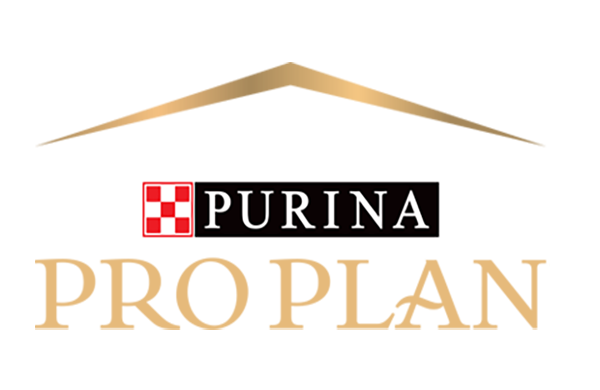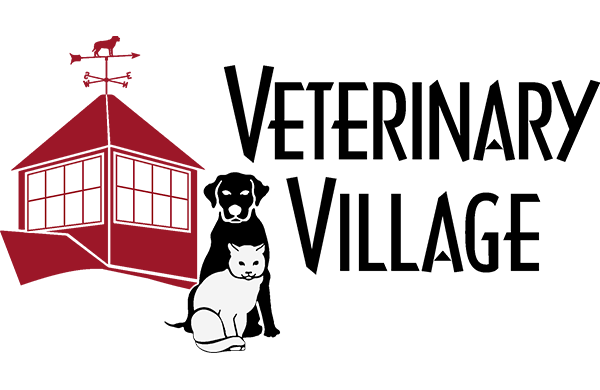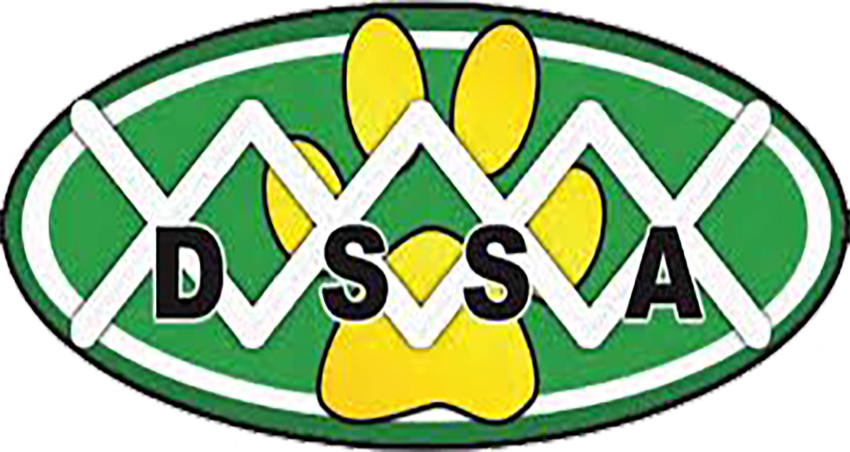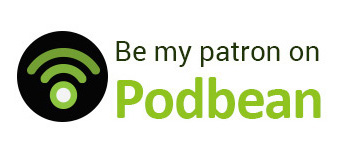157 – Sioux Forsyth: On Legends Robert and Jane Forsyth
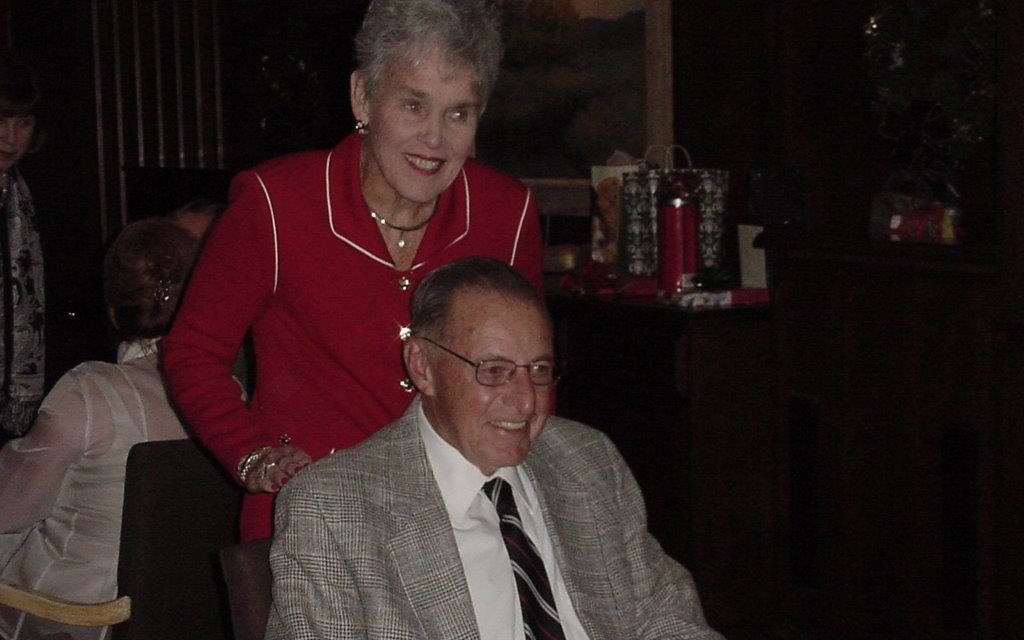
SIOUX FORSYTH: ON ROBERT AND JANE FORSYTH – WESTMINSTER LEGENDS
Sioux Forsyth is the modern day “keeper of the flame” in the memory of her parents, the late, great, Robert and Jane Forsyth. The only husband and wife team to this day to both win Best in Show at Westminster Kennel Club, the Forsyth’s were formidable handlers in the Golden Era of large kennels owned and operated by wealthy benefactors. In the 1980s, they both retired and turned to judging, eventually each acquiring the coveted “all-breed” status.
“I was lucky,” Sioux said. “The things I learned on a daily basis that I took for granted, I probably shouldn’t have. Because not everyone had those opportunities. I saw amazingly good dogs that people today never got to see. And I saw them on a daily basis.”
SIOUX FORSYTH’S “LEONARD” THE WHIPPET
Her favorite, though, of all of those famous and fabulous dogs was a Whippet her father imported from England, Charmoll Clansman. A dog who hated the show ring, but sired the famous Ch. Sporting Field Clansman, who was a two-time group winner at the Garden.
“Leonard hated everyone in the kennel including my mother,” Sioux said. “He hated to show. He was one of the few who lived in the house. They gave him to me because I was the only one he liked. Mom forgot him in the house twice. It was that unusual to have a dog live in the house. They were kennel dogs. When they retired, they went home to be a pet. Until then they needed to know their job, and their job was to be show dog.”
12 BEST IN SHOWS IN THE TRUCK
Sioux related a story about her parents, who were assisted by George Alston at that time, and George Ward, the famous terrier man, taking a dog show trip to Texas “uninvited,” as they say. “They had 12 Best in Show dogs on the truck. They left after 10 shows with one group win,” Sioux marveled. “They laughed about it. But, really, today, how many handlers have 12 best in show dogs on the truck? Most of us are lucky to have one or even a group winner.”
“It was very different for me than for my parents (as a handler),” Sioux noted. “Part of that was personality. Part of that was also the era. When you hired my parents, you hired them because they were professionals and the best at what they did. When I started showing dogs, I would have people hire me and tell me where I needed to go show their dog. Trust me, no one ever told mother where to show their dog. Very few people told my mother anything, never mind how to do her job. To me it’s a lack of respect. That when you hire a professional that’s exactly what you’re doing. Just like hiring your personal doctor or the person who cleans your house. You hire a person, it’s because they’re good at what they do. When you hire a handler you should be hiring them because you respect them and you believe they will do the best job for you and your dog. And that seems to be lost.”
JANE FORSYTH “SUFFERED NO FOOLS”
Those of us who didn’t encounter Mr. and Mrs. Forsyth until later in their careers were under a misconception that “Janey’s” unwillingness to suffer fools came with an advanced age, Sioux laughed outright.
“Don’t ask unless you want the truth,” Sioux said. “My mother was brutally honest. An amazing dog person. Someone that, she’d judge a class and I’d ask her why did you put that one up. She’d say something like ‘did you see those feet? Those were the best feet in the class. You can’t build a great big house on a faulty foundation.’ That was one thing, she always looked at some things that we may pass over. I cannot tell you how many people come to me with hilarious stories of my mother…. how many of them have to do with toenails… I have got to tell you the best Janey story… my mother was judging standard poodles in the midwest. She called out to this handler by name, ‘you know you probably have the best one here, but I can’t stand those dead baby hands’…. What are dead baby hands? Flat feet…”
QUALITY OF SHOW DOGS TODAY
Sioux talked about the quality of dogs in her parents day and today, noting that, in her opinion, the loss of the large breeding kennels has led to an overall decline in depth of quality in breeds.
“First of all, when my parents were showing dogs, especially in the ‘50s and ‘60s, …. they both worked for these huge kennels before they went out on their own. They’d have 50 head of greyhounds, 100 head of whippets. We don’t have that any more. That’s one big reason we have lost a lot of depth of quality. We don’t have huge breeders anymore. We don’t have kennels of 100-200 dogs anymore that are just breeding kennels.
“These kennels were owned by very wealthy people. Mrs. Dodge for example. We always had 45-50 Smooth Fox Terriers for Mrs. Ferrell of Ferrell shipping lines. They would hire someone like my parents to run their breeding program and their kennel. (The handlers) would take these people’s dogs to the show and show them. Instead of having to go out on your own and have 10-20 clients to pay bills, you’d work with one kennel to gain experience breeding, whelping, raising and taking them to dog shows. It was these people’s golf or their tennis. That was their identity. When Peter Green first came to this country, he worked for individuals with very large kennels. That’s how a lot of our professional handlers earned enough money to go out on their own and show dogs for multiple clients. We’re losing quality and depth of quality because we don’t have those kennels anymore.”
BOB AND JANE WINNING AT THE GARDEN
The two most famous of the dogs her parents showed, Sioux added were the ones they each won with at the Garden.
“Dad won in 1964 with the Whippet Ch. Fleetfoot of Pennyworth. Mom won with the Boxer bitch Susie in 1970 (Ch. Arriba’s Prima Donna),” Sioux said. “I sat with mom for a lot of hours before she passed. I asked her what was the best boxer you ever showed. She said it would have to be barrage (Ch Barrage of Quality Hill).
“We carried 10-15 boxers to every show. There were two in every class. They would switch off which one they showed every day.”
PART TWO ON THURSDAY ON PURE DOG TALK
Enjoy these amazing memories and more during Laura’s interview with Sioux today.
Join us for part two of the interview when Sioux talks about showing dogs in proper condition, her mom’s lifetime friendship with Anne Rogers Clark and, spoiler alert, her thoughts on the future “legends” of the sport.
ALLISON FOLEY’S TIP OF THE WEEK
TOENAIL TRIMMING AND CARE
Perfect for our Jane Forsyth Day!!! Jane was a stickler on toenails… so listen up folks…
Laura: Pure dog talk is the voice of purebred dogs. We talked to the legends of the sport and give you the tips and tools to create an awesome life with your purebred dog. As strong supporters of the American Kennel Club, we talk about everything from confirmation to preservation, breeding from competitive obedience to field work, from agility to therapy, dogs, and all the fun in between. Your passion is our purpose. Tremendous thanks to our sponsor, royal canin. Every day more top breeders are choosing Royal Canin. Join the winning team.
Laura: Okay, crew, before we get into today’s show, I am super excited to tell you about something new here at Pure Dog Talk. We know breeders are the lifeblood of our sport. We celebrate and honor our master breeders, so we’re bringing you Breeders Voice. Breeders Voice sits down with top breeders, sharing their secrets, how they got where they are, the joys, and maybe even the heartbreaks. If you haven’t had a chance, click the don’t miss an episode button so you’ll get these in depth articles delivered free along with your podcast. Sign up on our facebook page, or at puredogtalk.com.
Laura: Welcome to Pure Dog Talk. I’m your host, Laura Reeves, and I have a very, very special guest today that I know I’m super excited to talk too and I think you guys will be quite excited to hear what she has to say. Sioux Forsyth Green is the daughter of two of America’s legendary dog show judges. I guess I would say Jane and Forsyth. So Sioux, welcome so much. I appreciate your time.
New Speaker: Well, thank you for having me.
Laura: So give us the 411. I mean you had a pretty, I would think, amazing childhood,
New Speaker: A lot of people think that!
New Speaker: And it was in a lot of ways — to be able to grow up with two unbelievable dog people — I was very lucky. Now that I’ve gone through handling and now I’m judging… the things that I learned on a daily basis that I took for granted, I probably should not have, because a lot of people didn’t have those opportunities.
Laura: They didn’t Sioux… and that’s fine. I’m so excited to have you talk to our listeners because I think that the opportunities you have, I personally am jealous of.
New Speaker: Well, I grew up around some amazingly good dogs that many people today never got to see, and I saw them on a daily basis. My parents tell of a story that before they were married, they went to Texas uninvited.
Laura: Oh Lord.
New Speaker: It was them, and George Ward, and this was when George Alston was working for my mother. They had 12 best in show dogs in the truck and they left 10 shows with one group win.
Laura: Oh Lord! and I think why I say Oh Lord, and maybe I think it still exists today, but I think it’s eased some. I’ve heard these stories about coming to Texas — as they say — uninvited. And we talk about the independent republic of Texas.
New Speaker: Oh. And they laughed about it. But the important thing to me is how many handlers have 12 best in show dogs in their truck? You know, a lot of times we’re lucky if we have one or even a group winner.
Laura: Exactly. So your parents showed some of the top dogs in the country, like you say, 12 best in show dogs in the truck. Think of those dogs. Who is your favorite?
New Speaker: I’m a little biased because a Whippet that my father had imported from England from the Charmoll Kennel, his name was Charmoll Clansmen. He sired Sporting Fields Clansman, who was a two time group winner at The Garden… and his father was a bit of a better Whippet; however, Laird did not appreciate dog shows.
New Speaker: As only a Whippet can.
New Speaker: Yes. He was definitely a purebred and he hated everybody in the kennel, including my mother, because they either stuffed him or did his nails. He was one of the few dogs that my parents showed that lived in our house, because if he didn’t, he wouldn’t have given even my father at the time of day. And when this dog was retired, they gave him to me because I was the only one that he liked, so he spends the rest of his days on my bed. And I can remember two times that my mother forgot him in the house and we had to go home and get him after we had left for the dog show. But that’s how unusual it was for us to keep a dog at our house. They were kennel dogs, they were show dogs, and when they retired they went home to become someone’s pet and until then they needed to know what their job was… and their job was to be a show dog, which is very different than the way we look at it today.
New Speaker: Absolutely. I was just thinking, wow. Yeah. Back in the day. So you, you handled some before you started judging. How different is it now for you, or was it for you, as a handler than it was for your folks?
New Speaker: Oh, it was very different and part of that was personality. Part of that was also the era. When you hired my parents, you hired them because they were professionals and they were the best at what they did. Well, when I started showing dogs, and even after I had started, I had been showing dogs for 20 years. I would have people hire me and then tell me where I needed to go show their dog. Trust me…no one ever told mother where to go show their dogs!
New Speaker: The image just….
New Speaker: Very few people told my mother anything, but they really didn’t tell her how to do her job. And to me, it’s almost a lack of respect that when you hire a professional that’s exactly what we’re doing, just like hiring your personal doctor or the person that comes to clean your house, you’re hiring that person because they’re good at what they do. Right? And when you’re hiring a handler, you should be hiring them because you respect them and you believe that they will do the best job for you and your dog. And it seems to be law.
Laura: Yes. I think there has been a number of those sorts of things that have gone by the wayside for lack of a better term. So I have to tell you, I enjoyed your parents very much. The times that I got to show to them, I didn’t know them well. You talk about your, your mother. Nobody told her what to do. I can remember her telling me what drink she would like at the Wirehair Pointer National. I better get it just right. I was like, oh my God, I got her a proper white wine spritzer. And that was what I got.
New Speaker: There you go. She was a big Campari drinker and when she passed whe had six cases of Campari. Have you ever tried it?
Laura: No. No. Compari is not one of my favorites.
New Speaker: Compari is italian glue. It’s made from pomegranates, so it’s bitter and it’s a very thick, syrupy liquor and then she mixed it with grapefruit juice.
Laura: Yeah, exactly. Let’s talk a little bit more about, I think too many people in the sport today, perhaps only remember your mom, particularly towards the end of her career, by which point she was not willing to suffer fools gladly. How is that?
New Speaker: A lot of people think that came with age. Not really!
Laura: Well, there you go.
New Speaker: And I get told this a lot… that don’t ask unless you want the truth. And..my mother was brutally honest.
Laura: Yes, yes she was,
New Speaker: But she was an amazing, amazing dog person. She would judge a class and I would ask her, why did you put that one up? And she would say something like…did you see those feet, those were the best feet in that class, and without good feet, how can you build upon a poor platform. What’s the word I’m looking for. You can’t build a great big house on faulty foundations and that was one thing she always looked at some things that we may pass over.
Laura: The beauty in the details.
New Speaker: Yeah. I cannot tell you how many people come to me and many, many people have hilarious stories of my mother. She really was a very funny lady… and how many of them have to do with toenails.
Laura: I just saw something about that. I was, I was stalking you, you know, so I could get a little enough information to feel comfortable and there was somebody had posted about their Short Hair and… Look I did it’s toenails and it won.
New Speaker: Yeah. And she would make these statements… it was hilarious. Especially right after she passed, people would call me or text me or facebook me or whatever, and there was a Poodle handler that said I have got to tell you the best Janie’s story that I have. And My mother was judging Standard Poodles in the midwest and she called out to the handler… which, God forbid we call a handler by name now.
Laura: Yes.
New Speaker: Oh, the ring of a judge. And she said, you know, you probably have the best one in here, but I can’t stand those dead baby hands. And I died laughing
Laura: and then.
New Speaker: The comments started… because this was posted on facebook publicly.
Laura: Yes.
New Speaker: The comments started… Well, what are “dead baby hands”. And in my mother’s era dead baby hands were flat feet and she would tell you… that’s what they look like.
Laura: Yes… from people of your mother’s era, that was frequently commented. And the first time I heard it, the same thing. I’m like, oh dude, Jesus, what is she talking about?
New Speaker: Yes. Yeah. So for those of you that don’t know what dead baby hands are, they are flat feet
Laura: Flat feet are not attractive. So go back and think about some of the super top winners that your folks showed and because you have such a great scope of time in the sport, talk about the overall quality of the dogs that were being shown at the time that your parents handled and some of our top dogs today. Can you make those kind of comparisons?
New Speaker: First of all, when my parents were showing dogs, especially in the fifties and sixties and then on into the seventies and the retired in 1981, they both worked for these huge kennels before they went off on their own. My father worked for Mardemere which is a Whippet and Greyhound kennel. They kept at all times 50 head of Greyhound and a hundred head of Whippet… ALL the time. We don’t have that anymore and that’s why I believed for many reasons, but one big reason that we have really lost a lot of quality and depth of quality in a lot of these breeds is we don’t have those huge breeders anymore. We don’t have kennels of 100, 200 dogs that are just a breeding kennel.
Laura: Right? And if we have them they are puppy mills and they’re bad. So help people understand how that just the sheer numbers enabled these breeders to create dogs with that depth of quality that you’re talking about.
New Speaker: Well, first of all, they were owned by very wealthy people. “Dodge”…we always had 45 to 50 Smooth Fox Terriers for Mrs. Ferrol of Ferrol Shipping Lines. So we’re talking quite wealthy people and they would hire someone like my mother or my father to run their breeding program and their kennels. So of course they would then have other people under them. It keeps the kennel up, but then they would take these people’s dogs to the dog show and show them. So then you’re cultivating your private handlers. So instead of having to go out on your own and have 10 to 20 clients, able to pay your bills, you can work one kennel and gain experience breeding, whelping, raising dogs, and then taking them to the dog show every weekend. That’s what these people did. It was their golf or their tennis or whatever someone may do for their relaxation and enjoyment, have these huge kennel of dogs. And that was their identity.
Laura: Right?
New Speaker: I know when Peter Green first came to this country, he worked for some individuals that had these very large kennels and that’s how a lot of our professional handlers then, how they earned enough money to go out on their own and become independent professional handlers and show dogs for several different clients, instead of the one that they worked for. It’s not only the quality, but it’s the depth of quality that we’re losing because we don’t have these kennels anymore.
Laura: They were able to do more breedings, keep more dogs, evaluate more dogs, run on more dogs. They didn’t have to fight with co-owners and all of the kinds of things that we have to deal with in the sport today because society has changed so drastically.
New Speaker: Yeah. And a whole other discussion will be the animal rights people who have done a whole lot of no good for this business, but you asked me probably the two top winning dogs that my parents showed. The first two that come to mind would be the two that they won The Garden with, and to this day my parents are the only married couple to have everboth won Best in Show at Westminster.
Laura: Absolutely.
New Speaker: The whippet that my father won in 1964 — Courtenay Fleetfoot of Pennyworth.
Laura: Pennyworth…Yes.
New Speaker: Then you have the Boxer bitch, “Suzie” — Arriba’s Prima Donna. And packing my parents’ house that I had to pack up because we remodeled the entire house and moved back into it. I came across a book CH Barrage of Quality Hill — and he was shown by my mother. And I sat with my mother for a lot of hours before she passed and I did ask her what was the best Boxer you ever showed? And she said it would have to be Barrage.
Laura: Because she showed an awful lot of boxers. That’s impressive.
New Speaker: Yes. Well, I can tell you when I was growing up, we carried, I would say 10 to 15 Boxers to every show. There were two in every class and they would switch off which one they showed each day. Like Bob would show it Saturday and Janie would show it on Sunday.
Laura: That’s an awful lot of boxers. Thank you Sioux, I really appreciate you sharing your memories of two incredibly influential people in purebred dogs. It’s very timely and very powerful on this first day of 142nd Westminster Kennel club judging. Listeners, join us again on Thursday for Part Two. Sioux’s going to talk about what it means to have dogs in proper condition, about her transition from handling the judging, and very interesting… the future greats who may someday walk in the footsteps of her parents.
Laura: Okay, crew. We’re all continually striving for expert level, right, but over at Royal Canin, expertly bread, expertly fed isn’t just a tagline. These guys obsess over purebred dogs and the perfect nutrition for each one of them. Royal Canin formulas are developed with your breeds. Unique needs in mind for superior muscle tone, coat health, and digestion. As breed experts, we know the right nutrition can unlock the magnificence in our dogs and the best part is, so does the Royal Canin folks. And they’re showing their support for purebred dogs every day, including supporting your favorite podcast. So check out the Royal Canin Crown Partners Breeder Rewards program. It’s a major win for breeders. You can visit my.royalcanin.com to sign up. Membership benefits include 20 percent savings over in store prices, quarterly rewards, free puppy kits, exclusive promotions, and a whole lot more. Check it out.
Laura: All right crew. We are back with Allison Foley from the Leading Edge Dog Show Academy with our tips of the week. Allison, welcome.
New Speaker: How are you today, Laura?
Laura: I am excellent. Excellent. Is it cold and freezing and yucky out there in far eastern Canada?
Allison: Well it WAS cold and icky and yucky yesterday and it will be tomorrow, but today it’s 10 degrees Celsius and raining.
New Speaker: Okay. Alright. So there you go. Could be worse. Yeah. So talk to me Allison. What are we talking about today?
Allison: Well, today I wanted to talk about different toe nail trimming techniques. So this is something that I learnednot right away. I was told a couple of different ways on how to tell like on a dark-nailed dog where to trim the nail, but this is basically my favorite ways to figure it out. So it’s really useful, especially if we have a dog who’s nails grow really quickly or we have a dog come into us to be shown or a dog that we’ve bred that’s come back that maybe their nails are a little bit longer and we’re trying to get as close to the quick as possible without cutting the quick. So I always recommend that you do have quick stop with you when you cut nails because accidents do happen, and I think it’s really important. And you know, if you do accidentally cut the quick, I think it is very important to just stop that flow of blood right away.
Allison: So as soon as you cut the quick and you see a dot of blood, just put your finger on and press really hard. And then with your other hand or with a friend, have them open the quickstop. Apply the quick stop as quickly as possible and again, press with a lot of pressure. That quick stop right into the quick so that it does cauterize the blood flow right away. You know, I see people and blood’s dripping out of the toenail, they’re trying to add it to the blood that’s actually dripping out and the quick stops just landing everywhere, right? But more importantly, what we want to talk about today is how to avoid that. So my favorite foolproof method that works on every color of nail, every length of nail, is this… I want you to look and you have to work with me people here. This is radio, right?
Allison: So I want you to LOOK at the underside of your dog’s nail. And when you look at the underside, imagine that, that shape that’s underneath there, looks like a canoe. So if you, if there. So the underside of the nail will be kind of hollowed out a little bit and it will look like a canoe. So then look closer again and you might see a fleshy part that I would refer to in your imagination as the waterline. So the canoe is filling up with water and where that waterline is in the canoe, that where the quick is. So ideally what you want to do is… looking at the underside of the dog’s nail, remembering to keep the dog foot in a natural position. Part of the problem people have is when they’re clipping nails, is that they’re doing it where it’s convenient for them to be so it could be higher in the air or more out to the side. Then it’s comfortable for your dog and your dog isn’t actually pulling the leg away because it doesn’t want you to do the nails. It’s pulling the leg away because it’s uncomfortable.
Allison: So think of a natural position for your dogs nail. So I like to do the front feet with the paw flipped underneath towards the back. I like to do the back leg the same way. Or is if your dog was maybe cocking his leg to pee. So you’re going to look for that waterline in the canoe and you’re just going to simply make… I prefer to use the old-fashioned Miller’s Forge Scissor type toenail clippers because they have two cutting edges that just like quickly slice the nail. I don’t like the guillotine type. I find it’s one cutting edge. So you’re doing twice as much work, they’re twisting the nail. So quickly with your scissor type nail clippers, you’re going to get as close to that watermark as possible.
Allison: So that’s your first clip. And then maybe you could take a couple very thin “shavings” I call them of nail and then you could see either a black dot or a little opaque piece of skin and that’s really the piece of skin that just protects the quick inside the nail. So once you’ve gotten to the either that black dot or that little opaque silvery piece of skin.. that’s as close as you can get to the quick without actually cutting the quick. If I have a dog whose nails are long, too long, and I’m trying to get them shorter with a dremmel, like a nail grinder, I will just dremmel that little piece of silver skin off just so the quickest exposed and usually it doesn’t even bleed, but you just take off that little silver piece of skin and that kind of pushes the quick back a little bit because a quick kind of shrinks up because you’ve done that. And I find if I can do that like every three days, twice a week, then you can really get the quick back without having a blood bath on your hands. So I actually learned that about the canoe method as I call it about 15 years ago. And it really changed my life from the first 15 years of me doing nails and looking for different landmarks. But I find it super foolproof and it works really, really well.
New Speaker: Absolutely agree with you. I learned that particular method when I was working in a pet grooming shop and we had 40 dogs a day going through and everybody else and their brother’s uncle. I started out doing nails and anal glands and baths. Right. That’s how everybody started.
New Speaker: And when you have to trim toenails on 40 dogs a day, boy you get real good. All right, well thank you Allison. and listeners, don’t forget to use your Pure Dog Talk 25 code when you sign up for one of your Leading Edge Academy courses with Allison. And that gives you a 25 percent discount on your course. So have a latte on us. Yeah. Yeah, we’d love to have you. Awesome. Thanks very much, Allison. Thanks Laura.
New Speaker: The Dog Shows Superintendents Association is a proud supporter of Pure Dog Talk. Our dog show superintendents are the hardworking people who make the dog show function. They are advocates for education and mentorship in the purebred dog fancy. So stop by the Super’s desk at your next show. Tell them how much you love Pure Dog Talk and give them a shout out for their support. That’s all for today. Thank you for joining us on Pure Dog Talk brought to you by the Aramedia Group, Publisher of ShowSight magazine, your home for purebred dogs.
Our Valued Corporate Sponsors:
Our Esteemed Advertisers:
Our In-Kind Supporters:
KNOWLEDGE IS POWER — FRANCIS BACON
When you become a patron of Pure Dog Talk you’ll tap into an exclusive community of experts to help you and your dog be blue-ribbon best at whatever you do with your purebred dog! Your support helps keep the MP3's rolling at Pure Dog Talk!
As a supporter, you’ll immediately gain access to the weekly Pure Pep Talk SMS, Pure Pep Talk private Facebook group, and priority emails. Patrons can choose to level up to the After Dark Zoom and a Patrons Digital Badge for their website— even a private counseling session with Laura on any topic.

DON'T MISS AN EPISODE!!


